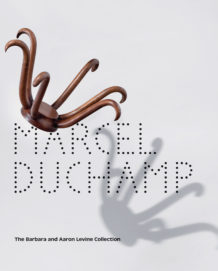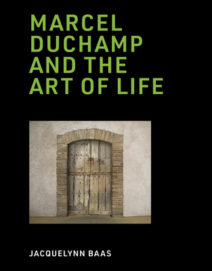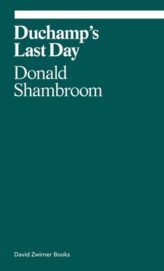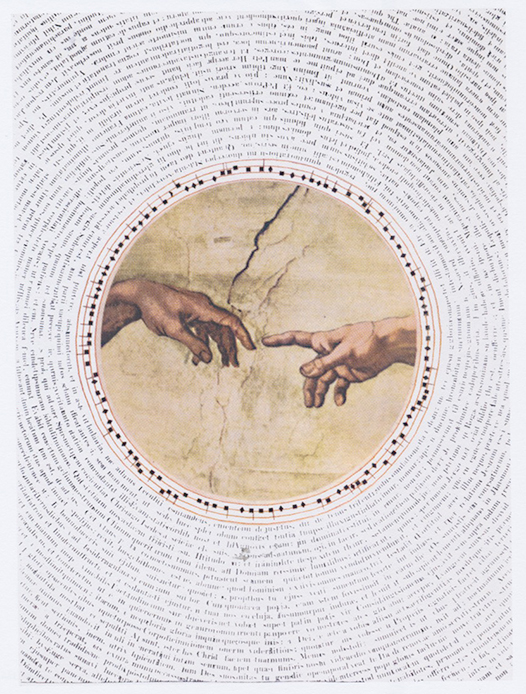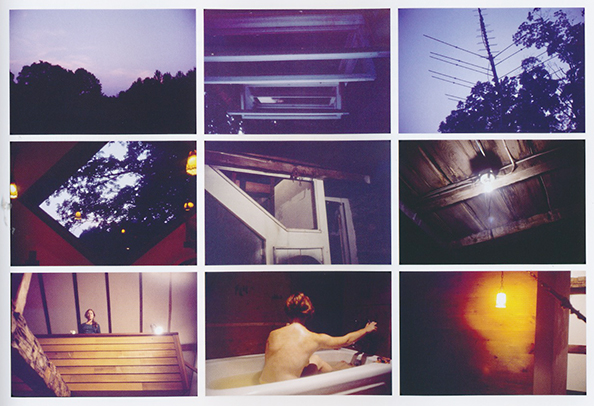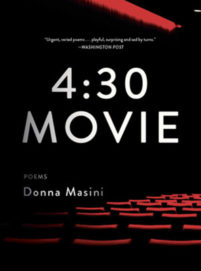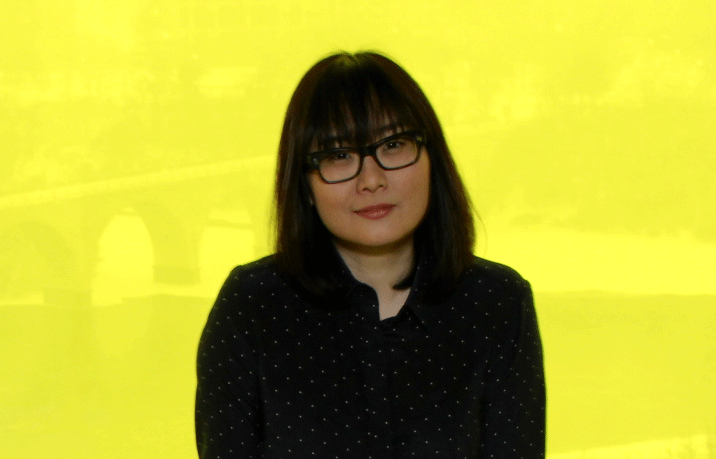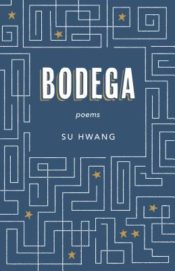
photo by Nina Subin
by Zhanna Slor
I first came to Rufi Thorpe’s writing several years back upon discovering the paperback release of her second novel, Dear Fang, With Love, at a favorite bookstore in Chicago’s Wicker Park neighborhood. I happened upon it completely at random and was shocked to find how much it spoke to the themes of home I’d been mulling over for years as an immigrant from the former Soviet Union; even more shocking was how accurately Thorpe was able to write about this longing without being an immigrant herself. I’m an avid reader, but as a Ukrainian Jewish immigrant who has spent much of her life in the Midwest, I don’t often see myself reflected in the books I read. This was not the case here, in a story about a despondent 17-year-old girl visiting her Lithuanian homeland for the first time. Once I finished Dear Fang, With Love, I read the author’s first book, The Girls from Corona Del Mar, which analyzes and reflects on the subject of friendship—a common thread in all of her work. Thorpe’s third novel, The Knockout Queen, (Knopf, $26.95), has recently been named a May selection for the Book of the Month Club, and is as fascinating as her previous works. We discuss the book and more in the interview below.
Zhanna Slor: I know at heart this is a story about a unique friendship, but it seems equally tied to the idea of female violence. I think Michael says it best when talking about how if his mother were a man, she would not have gone to prison for stabbing her abusive husband. This echoes back later when Bunny is given the same prison sentence of three years for an accidental moment of violence, while Michael's male attackers get away with beating him half to death. Is this hypocritical treatment of female vs. male violence the seed from which this novel grew, or did the characters and their relationship come first?
 Rufi Thorpe: Certainly, as I was writing, female violence was what I saw as the novel’s subject. How the novel grew is a much more chaotic process that took place over many years. I first wrote a book about Bunny Lampert ten years ago, and while there were good things in it, it was not a successful novel and not one word of it made it into this present incarnation, although even way back then she was a bisexual female boxer.
Rufi Thorpe: Certainly, as I was writing, female violence was what I saw as the novel’s subject. How the novel grew is a much more chaotic process that took place over many years. I first wrote a book about Bunny Lampert ten years ago, and while there were good things in it, it was not a successful novel and not one word of it made it into this present incarnation, although even way back then she was a bisexual female boxer.
ZS: So how did Michael come into play? Did his character come to you first, or the realization that Bunny needed a counterpart? Was it important that he be as nonviolent as Bunny is violent?
RT: I had been writing this iteration of the novel for about a year from Bunny’s point of view, and it just wasn’t working very well. She couldn’t see herself clearly enough to give the reader a sense of what was at stake. So I started to imagine someone who could act as a kind of counterpoint, nonviolent where she was violent, intellectual where she was instinctive, discerning where she was oblivious. I am not sure I thought about it so clearly. He just kind of came to me. And he came very fully formed and with that voice and that backstory. When I first started writing from his point of view, I was kind of astonished because suddenly I was writing, fast and fluidly and with great urgency, a project that I had been stalled on for months.
My experience is that when a character comes to you like that, kind of erupting into your consciousness, it’s usually some part of yourself you locked away. So that’s another way to understand him. I think with fiction it is always some serendipitous coincidence of your front brain making craft decisions and your subconscious, you know, kind of screaming into the void.
 ZS: You write friendships so vividly and with such complexity. I remember with The Girls from Corona Del Mar thinking some of the same things I wondered here: Is this what serious friendships are like? As full of hatred as love? A thing of beauty that is also half-drowning in ugliness? So I am curious to know if there was a life-altering Michael or Bunny from your youth that you might have drawn from in your writing.
ZS: You write friendships so vividly and with such complexity. I remember with The Girls from Corona Del Mar thinking some of the same things I wondered here: Is this what serious friendships are like? As full of hatred as love? A thing of beauty that is also half-drowning in ugliness? So I am curious to know if there was a life-altering Michael or Bunny from your youth that you might have drawn from in your writing.
RT: Yes and no; I think I often reach for friendship when I want to talk about moral ambiguity because it is one of the only relationships you are free to abandon. I mean, you can abandon a spouse, but it takes a lot of paperwork and moving house. A friendship is entirely voluntary and for my purposes acts as a nice blank canvas. It gives the narrator enough distance to see the other character clearly, whereas if the relationship were familial, a mother and daughter, say, it might take years of therapy before they were even able to conceptualize their separateness enough to see each other clearly. So in many ways, friendship is a short cut, a sterile petri dish in which to grow the moral experiment.
On the other hand, I have had many profound friendships in my life, and I’m not sure if the intensity I experience is normal. It took me a very long time to understand that I was bisexual, and for many years I believed female friendship was inherently romantic. And honestly, I still kind of think it is, or can be. I don’t have any firm convictions about the way the two things are related.
ZS: Has what you look for in a friend changed as you get older? I was just talking with another mom about how we used to be more attracted to friendships with girls who would ditch you half the time you made plans, but the other half would show you the night of your life; now that we have babies, it’s more about women who have similar parenting philosophies, live nearby perhaps, and understand when to stop refilling their wine glass (among other things). For me this alone can explain the distance that grows between Bunny and Michael as their lives take such different turns.
RT: Absolutely. When I was younger, I was much more prone to become friends with someone because they captivated me, because they were mysterious or frightening or represented something that seemed impossible to me. The more mythic the person was, the greater my susceptibility. Now my criterion for friendship is more: Do I respect this person? Which is just another way of framing what I think you are talking about.
ZS: Yes, totally! That’s a beautiful way of putting it. Another thing that really stuck with me was Bunny's size. How important was it to the story that she be so tall? Did her tallness, in some ways, doom her? And did it also save her?
RT: When I was nine and ten, I was the tallest girl in my class, and not knowing my father, I didn’t really have any genetics to go by, so I believed I would continue to grow and be tall. But at eleven or so, I stopped growing entirely, and I am now five foot five, if the person measuring is feeling generous. Nonetheless, I have always pictured myself as very large and physically powerful, and so on some level Bunny must be a kind of wish fulfillment self-portrait, though I never explicitly thought of her as such.
Growing up, I spent maybe an inordinate amount of time worrying about my femaleness. As I came to understand the historic subjugation of women, I just kept wondering why. Basically, I was worried that maybe men really were better, smarter, somehow more serious or worthy. For the most part, I convinced myself these disparities were imagined or socially constructed. But physical strength—this was not a difference that could be dismissed so easily.
Any woman who has had to physically fight a man, you come up against your own physical weakness. And it’s terrifying to understand that they could kill you, and you would not be able to stop it or even really slow it down. I think this knowledge, this primordial kind of inequality, is always there between men and women to some extent, and so Bunny is kind of this fantasy of physical power. The safety of that power, and the danger of that power.
ZS: Yes! I have an Israeli husband and before I became pregnant, he got me obsessed with learning Krav Maga. My gym held classes for both men and women at the same time, and I was amazed at how much more powerful even the most out-of-shape man was over me. I’m sure there are exceptions, especially for women who train for years, but it’s definitely a difference as you say. Did you take any martial arts classes to prepare yourself for writing a boxer?
RT: No, I didn’t. To some extent, I don’t think I was truly interested in the boxing. In other words, I was not trying to capture something authentic about boxing. I was using boxing to explore something else, and so I was really only interested in reading about boxing, watching boxing. I didn’t make any attempt to understand what boxing is fundamentally about, which I think would have required me to train as a boxer to understand. People who love boxing will be disappointed with this book because it says nothing uniquely insightful about boxing at all, I’m afraid.
ZS: I don’t find it disappointing; to me, it felt more like Bunny finally putting her enormity to good use now that she can no longer play volleyball. It was probably better for her to box than turn to alcohol, like her father did. Do you think some of the violence so prevalent in the book is a direct result of living with alcohol and alcoholism? There’s also some bad parenting depicted; does that play into the violence as well?
RT: In my experience, you can have violence without alcohol, and alcohol without violence, but if you put alcohol and violence together the alcohol will almost invariably cause the violence to escalate. Even more than that, the cycles of crisis and denial that come with any addiction help to mask the violence and excuse it so both the person being violent and the people living with them tend to blame the violence on the alcohol. They were “just drunk.” They are going to do better. And how can they do better if you keep throwing their past bad actions in their face? In order for them to believe in themselves, they need you to believe in them! And on and on.
ZS: I spent half my life in Wisconsin, where everyone drinks so much it’s hard to define who is an alcoholic and who is not. And my middle school in Wisconsin was also called North Shore, despite being nowhere near any body of water. It could be a depressing place, so it was easy for me to understand what drew Bunny and Michael together. Like many friendships, especially at that age, theirs sprung from loneliness more than compatibility. Is this perhaps why it was doomed to fail? They really didn't have much in common outside of their incompatibility with their peers. In some ways, they end up feeling like siblings; they have this shared history and deep feelings for one another, but they don't necessarily seem to want a relationship.
 RT: I love that your land-locked middle school was called North Shore! That’s fantastic. I think siblings are a very interesting comparison. It’s true, they are brought together by their loneliness more than compatibility, and especially as adults they have almost nothing in common. I think if the plot elements of the book that tie their lives together had not taken place they might have just drifted apart in a more typical fashion. But I think they would always think of each other wistfully. Sometimes a person in your past kind of comes to symbolize something for you, or you learned something important about the world through them, and it feels like you wouldn’t have become who you became without them. I think Bunny and Michael are like that.
RT: I love that your land-locked middle school was called North Shore! That’s fantastic. I think siblings are a very interesting comparison. It’s true, they are brought together by their loneliness more than compatibility, and especially as adults they have almost nothing in common. I think if the plot elements of the book that tie their lives together had not taken place they might have just drifted apart in a more typical fashion. But I think they would always think of each other wistfully. Sometimes a person in your past kind of comes to symbolize something for you, or you learned something important about the world through them, and it feels like you wouldn’t have become who you became without them. I think Bunny and Michael are like that.
ZS: One thing I keep coming back to is the total absence of Michael's father. Like Bunny's dead mother, his absence is so deep and intense it almost feels like a presence, except in his case it's a voluntary absence. Where is he all this time? What do you think keeps him away?
RT: Men sometimes just abandon their children. Women do too, but they don’t do it quite as often. It’s really one of the great mysteries of the world, how easy it seems to be for them to do this. My own father did this, and I guess I think he probably just didn’t think about me very much—out of sight out of mind.
In some ways, I think children are sort of the opposite of friendship because the entire relationship is predominantly characterized by our moral obligation to them. And if you are fucking up your life, doing so with a kid around feels so, so much worse. So I think Michael’s dad stays away because he is ashamed, but also not interested in changing.
ZS: I don’t really understand how any person can abandon a child like that, especially after having one myself; you definitely don’t hear about women doing it as frequently, probably because it’s in our DNA to be nurturing. I think it’s why I found myself not totally able to understand Michael’s mother. She still sees him occasionally, sure, but why do you think she didn’t she try harder to get him back? Was it really a miscommunication between her and his aunt?
RT: I have also felt the primordial, biological protectiveness over my children, and yet I feel so hesitant to say it is in our DNA, some way that women are inherently different than men. Certainly women do abandon their children and so I think it must be different for everyone. I don’t think there is just one experience of motherhood, but more of a range, a distribution.
As for Michael’s mother, I think they become distant while she is in prison; three years is a long time in the life of a child, and when she gets out, Michael is kind of at the height of his Pollyanna-ish moralizing and I think he makes her feel like dirt when she involves the kids in stealing gift cards to eat or other petty crimes. I think he probably did tell Aunt Deedee he didn’t want to live with her, and I imagine he was as little able to hide his emotions as most children. His mother would have felt that as a huge rejection and condemnation, almost as if Michael were siding with the judge in revoking her right to be a victim and making that trauma fresh all over again.
ZS: The idea that living with continual fear changes you, which Michael brings up while studying for his PhD, is intriguing. Was that at the back of your mind while writing Michael's history?
RT: Well, I think anyone coming out of an abusive relationship or having been raised in an abusive home, a kind of deformity of consciousness takes place that you aren’t truly aware of until you leave. As a child, Michael’s sense of himself was entirely as his mother’s best friend and confidante in the kind of war against his father, and during this time his sexuality was suppressed. Then after he moved in with his aunt, he was more focused on both courting and preventing social ostracism, this kind of need to signal that he is different while not wanting everyone to really know exactly in what way he is different, and the relative stability and yet lack of intimacy of his home life is actually pretty alienating, and he becomes this anthropologist walking around, observing everyone, taking notes on middle class life in the suburbs. Then through the friendship with Bunny, through his affair with Anthony, and through college he grows up into a man who is remarkably well adjusted and pretty happy, and so he has to kind of go back and make sense of all those disparate selves. And in each period his perception of the world was different as well, his understanding was changing.
And the paradigm he keeps returning to in his attempt to understand human beings in general and himself in particular, is the human as animal, as body, as organism, and I think that is why evolutionary biology appeals to him so much. So in that sense, I never really meant it as like a motif that I, the author, was creating, I just honestly thought that someone so obsessed with these questions might decide to study them professionally.
ZS: It definitely made sense to me that he would study evolutionary biology; he was always more observant than anyone around him. Bunny puts it perfectly on page 266: “You study yourself. You study life instead of living it. And everything you feel is like a fine wine and you sniff it and swish it around and in the end you barely fucking drink it.” Although I do not agree with her subsequent assessment—that he let those boys beat him up. Does she think that because at her size she can’t imagine letting anyone rough her up?
RT: Complicity and victimhood are interesting and complicated things. I had a bad thing happen to me, and it always bothered me afterwards that I had had my car keys. Why had I not tried harder to get away? In the moment I had felt very trapped, but was I really? It nagged at me. I would say, “You had your keys,” in my head all the time. It was very self-punishing, but at the same time I think I was desperately trying to figure out some way in which I was still in control.
Michael is in no way responsible for what those boys do to him, but I think that actual victimhood is just a lot less tidy than we are comfortable with. I’m thinking about the way the defense attorney grills Michael’s mother about why she continues in this situation, why she doesn’t just leave, and thinking about how victimized Bunny feels by her own violence. Sometimes when you are the victim, you feel you have no other option, that you are helpless, and sometimes you feel that way when you are the perpetrator, that you couldn’t help doing it, that it was somehow involuntary because who in their right mind would do such a thing?
So for Bunny, the lesson of her life has been that the moment she felt most helpless, most out of control, most a victim, was also the moment she was most truly morally responsible for. I think that is why she refuses to let Michael be a victim; if she doesn’t get to be, no one gets to be.
ZS: I can't decide how I feel about Ray. He is terrible, but also, he is sometimes a little bit comic relief. He's like a very drunk Saul Goodman. Or maybe it is Michael's hatred of him that's funny. But he's also the only parent who actually sticks around, which, sadly, makes him technically the best one. What should readers make of this?
RT: Ray is terrible, but he is also one of my favorite characters I have ever written. The thing about bad parents is that they aren’t bad all the time. Even the worst parent usually has a clutch of shining moments where they manage to do the right thing. And sometimes a good parent, or one who is trying very hard to be good, and I would put Aunt Deedee in this camp, has a moment where they truly fail.
But the way that Ray is evil, vain and venal and almost physically incapable of being honest, does indeed strike me as very funny, and I am not sure why. I have known so many Ray Lamperts in my life and even when I think of the men themselves, I kind of get the giggles. Maybe it is the disparity between the way they see themselves and the way I perceive them to be, a kind of tension created by the sheer magnitude of their delusions, which for all their unreality are of the most predictable quotidian nature imaginable. Watching such a man feel powerful and worldly as he is ordering sushi or a martini or something is so painful and exasperating that you almost have no choice but to laugh. A lot of life is like that!
Click here to purchase The Knockout Queen
at your local independent bookstore

Click here to purchase Dear Fang, With Love
at your local independent bookstore

Click here to purchase The Girls from Corona del Mar
at your local independent bookstore

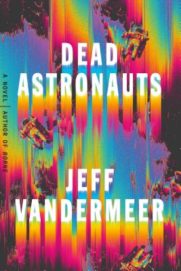 Jeff VanderMeer
Jeff VanderMeer




